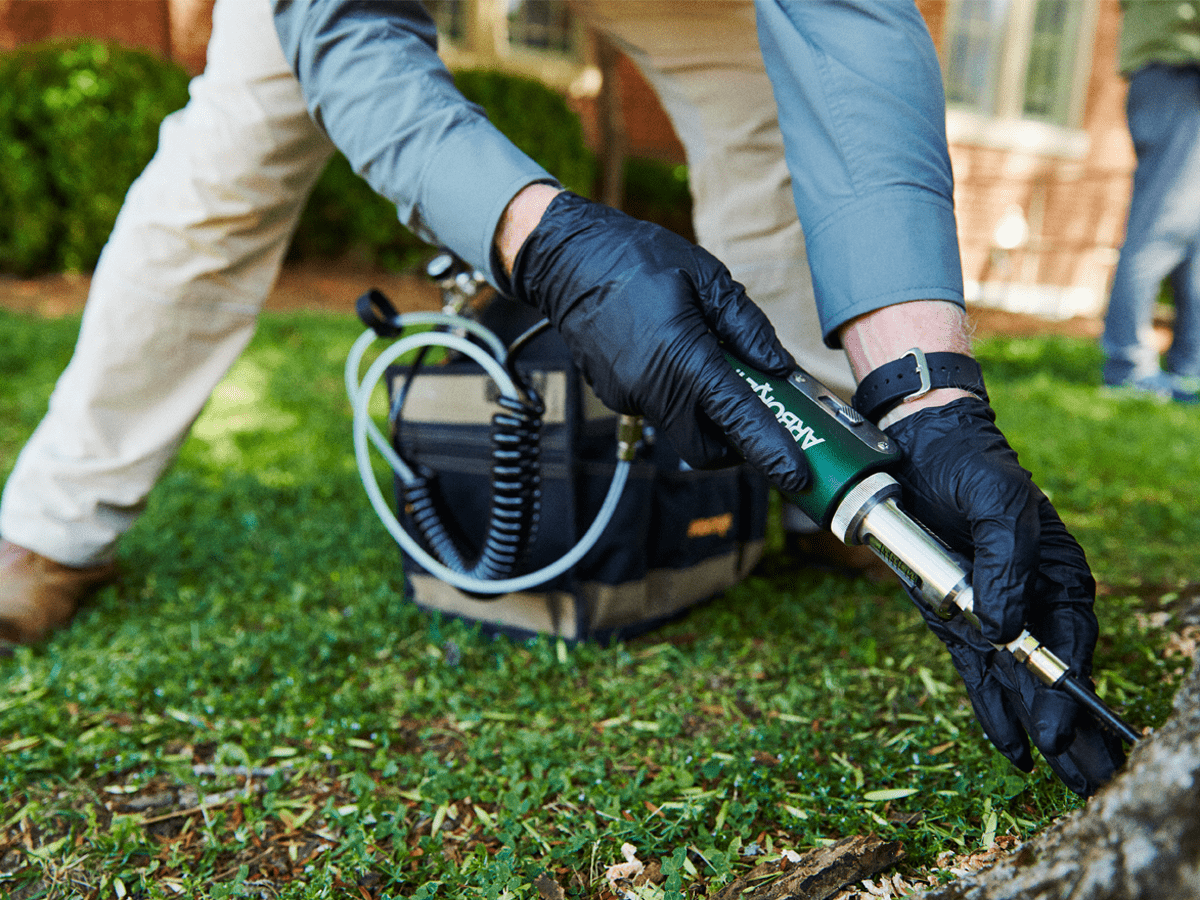Invasive insects are found throughout the US and Canada in alarming numbers and have become a major problem in the past several years. Invasive Shot Hole Borers have been targeting more than 300 species of trees between San Diego and San Luis Obispo. Additionally, Pine Bark Beetles have been relentlessly attacking trees in Arrowhead, Big Bear, and other mountain and foothill regions. Gold Spotted Oak Borer, while spreading more slowly, has been decimating live oak trees north through Santa Barbara County. All of this activity is in California alone, but throughout the US, invasive insects have become established and well-known in just the last few decades, including Asian Longhorned Beetle, Emerald Ash borer, and Spotted Lanternfly. Millions of trees have died due to these infestations, with over 100 million lost to emerald ash borer since 2002. It’s no wonder that these species are a huge concern for Americans concerned about trees in their community. While the problem with invasive species has received widespread media coverage, these reports can often be misleading, leaving the public confused about treatment options.
Current Methods of Tree Insect Control
Several methods for insect control exist in the green industry, but when news about new invasive tree pests makes it to the media, it is often mischaracterized as a binary issue: the use of pesticides for large-scale spraying, or the loss of thousands of trees. Pesticide sprays, as we know, cover not just the invasive insects, but the entire plant and surrounding area. This method impacts the overall environment, since non-host plants and insects are also affected. Unfortunately, pollinators that are critical to the balance of our ecosystems are often negatively impacted by large area spraying. In addition, topical sprays can be of limited utility and are not always a precise option.
Tree injection as a method of delivering nutrients, insect control, and disease control has been a common practice since the 1970s, and can trace its origins to the 12th century. Treatments get administered through a plug placed in a drilled hole, ensuring the product goes directly into the tree’s vascular system. The product then gets dispersed through the trunk, branches, and leaves. Tree injection has been used in several major cities and regions throughout the US to great effect, eradicating insect infestations and protecting hundreds of thousands of trees.
Addressing Injection Misconceptions
Why then is tree injection often left out of conversations about treating invasive pests? There are several misconceptions about tree injections that should be clarified:
- Tree injection is prohibitively expensive
- Tree injections take too much time
- Treatments aren’t effective, and are harmful to pollinating insects.
Repeated use and decades of data have shown us how safe and successful tree injections are. They are cost-effective in the long run, since each injection is only a few milliliters of product, and some treatments are active for two or three years. Treated trees can also provide protection to nearby untreated trees by lowering overall insect pest populations, resulting in further savings and greater efficiency.
Given the precision nature of injection, less product is used overall compared to a topical spray. Injectable formulations are far less diluted, which means faster work and easier transportation – no need for a large backpack or a truck for tank mixing onsite. Additionally, with the proper technique, field tests have shown that even large trees can be completed in just minutes, and multiple trees can be worked on at once, meaning large-scale jobs can be managed efficiently. Product injected into trees remain in the wood and leaves, leaving the surrounding soil, water, and air unaffected, reducing damage to off-target species.
University studies have shown that when correctly performed tree injections provide minimal risk to pollinators. Pollinating insects can be protected from harmful side-effects of treatments by ensuring the product is injected into the tree after it has finished flowering and producing pollen. Some products also have a very short half-life, meaning there’s no risk of the product remaining active the following spring.
Working for Positive Results
Tree injections have been effectively used in cities to protect trees on a large scale. In 2007, the city of Chicago experienced a huge outbreak of Emerald Ash Borer threatening the health of 95,000 public ash trees. At least 18,000 trees were injected each year, preserving over 65,000 ash trees. Far more cost-effective than replacing dead or dying ash trees, injection technology also helped to keep urban areas shaded while preserving neighborhood character. New York City is another example of a large city that used tree injection to protect their trees from an infestation of Asian Longhorned Beetle. By 2019, several of the city’s boroughs were declared clear of the pests, preserving thousands of trees. Additionally, New York currently treats over 10,000 ash trees each year.
While other choices like sprays or tree removal may be the best decision in some situations, tree injections should not be dismissed because of common misconceptions. Performed correctly, tree injections are fast, effective, targeted, and have minimal impact on pollinators and the environment. The more information arborists have, the better they can inform customers and help educate the public and green industry about an important plant health care procedure. Tree injections should always be considered as a valuable option available to plant health care experts.
This blog was originally published in the August 2024 edition of TCI Magazine. It has been posted here as originally printed.
Writing credit goes to Kevin Brewer, Northeast Regional Technical Manager

